1. What is Parallel EVM?
Parallel Ethereum Virtual Machine (Parallel EVM) is an upgraded version of the traditional Ethereum Virtual Machine (EVM), which improves the throughput of blockchain transactions and enhances transaction processing speed and efficiency by simultaneously processing multiple non-conflicting transactions.
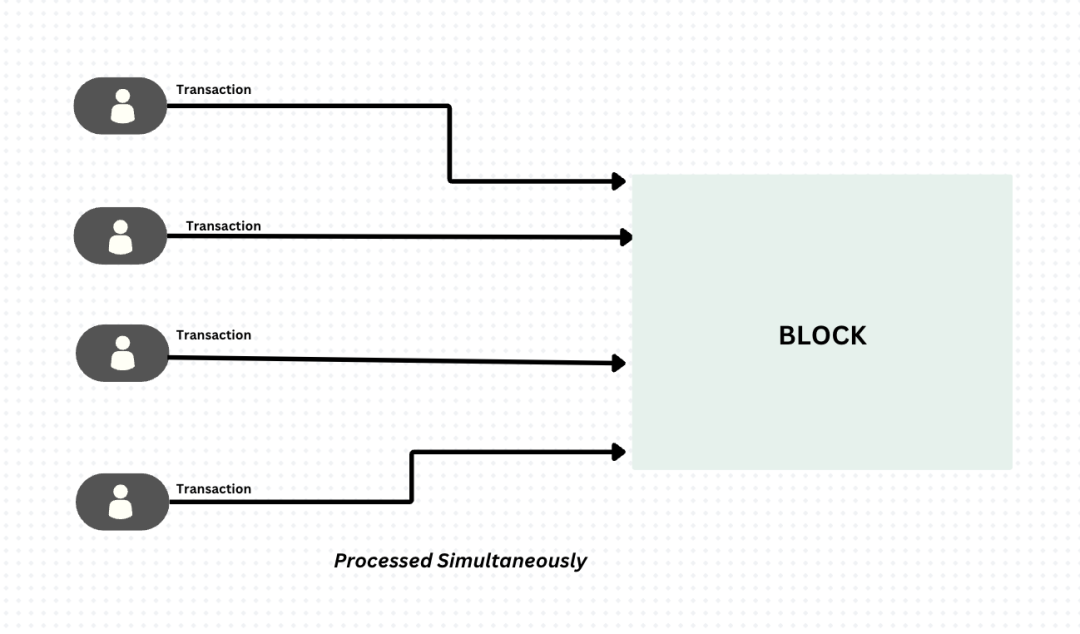
The Ethereum Virtual Machine (EVM) is the consensus and execution mechanism of the Ethereum network, responsible for processing and executing transactions. However, in the traditional EVM, transactions and smart contract execution are carried out sequentially. Each transaction must be processed one after another, forming a linear ordered process. Although this method is simple, it may lead to bottlenecks, especially as transaction volume increases. Each transaction needs to wait its turn for processing, which may increase processing time, leading to potential delays and higher costs (in terms of gas fees).
Parallel EVM significantly improves the throughput and execution speed of the blockchain by simultaneously processing multiple non-conflicting transactions. For example, if Bob wants to make an exchange, Alice wants to mint a new NFT, and Eric wants to stake funds to validators, these transactions can be processed simultaneously rather than sequentially, reducing transaction processing time and costs. This parallel processing capability allows the blockchain to handle more transactions in a shorter time, addressing congestion issues in traditional blockchain systems.
2. How does Parallel EVM work?
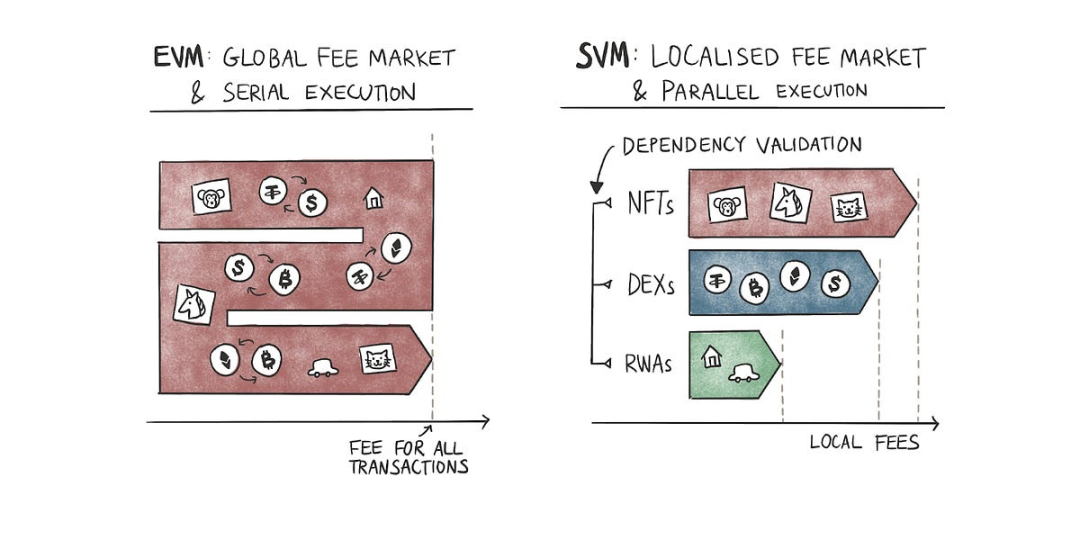
In the current EVM architecture, the most granular read and write operations are sload and sstore, used to read and write state trie. Therefore, ensuring that different threads do not conflict on these two operations is a direct entry point for implementing parallel/concurrent EVM. In fact, in Ethereum, there is a special type of transaction that includes a special structure called an "access list," allowing transactions to carry the storage addresses they will read and modify before execution. This provides a good starting point for implementing scheduler-based concurrent methods.
In terms of system implementation, parallel/concurrent EVM takes three common forms:
1. Scheduler-based concurrent processing
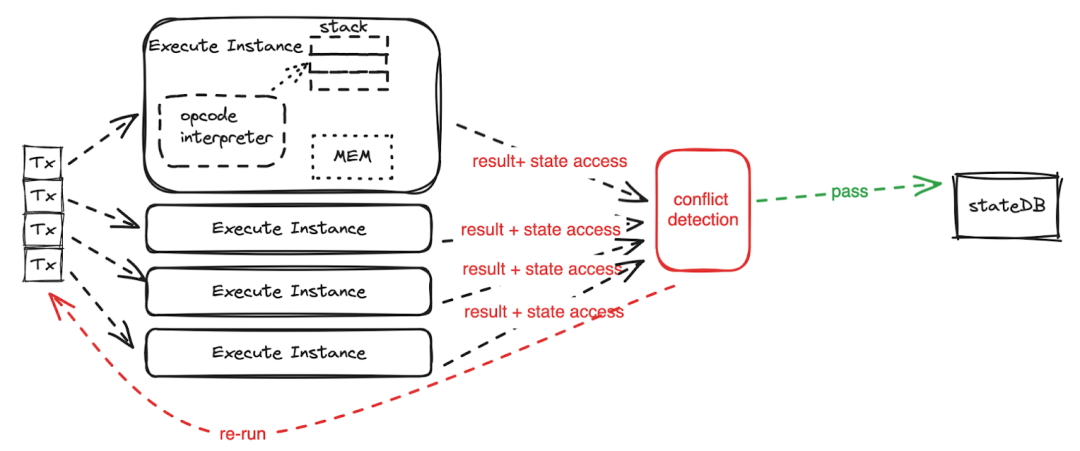
- Access list: Before executing transactions, the access list is used to determine in advance the storage addresses that transactions will read and modify. The access list contains all the state information that each transaction needs to access.
- Scheduling algorithm: Based on the access list, the scheduling algorithm arranges transactions to be executed on different threads, ensuring that concurrently executed transactions do not access the same storage addresses, thereby avoiding conflicts.
- Concurrent execution: In actual execution, multiple transactions can proceed on different threads, and the scheduling algorithm ensures that these transactions do not have mutual dependencies or conflicts.
2. Multi-threaded EVM instances
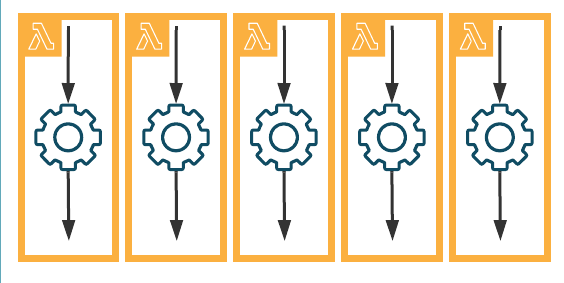
- Instantiating multiple EVMs: Multiple EVM instances are created on a node, each instance capable of running independently and processing transactions.
- Transaction allocation: Transactions to be processed are allocated to different EVM instances based on a certain strategy (such as hash value, timestamp, etc.).
- Parallel execution: Each EVM instance executes the transactions assigned to it in its own thread, and multiple instances can run simultaneously, achieving parallel processing.
3. System-level sharding
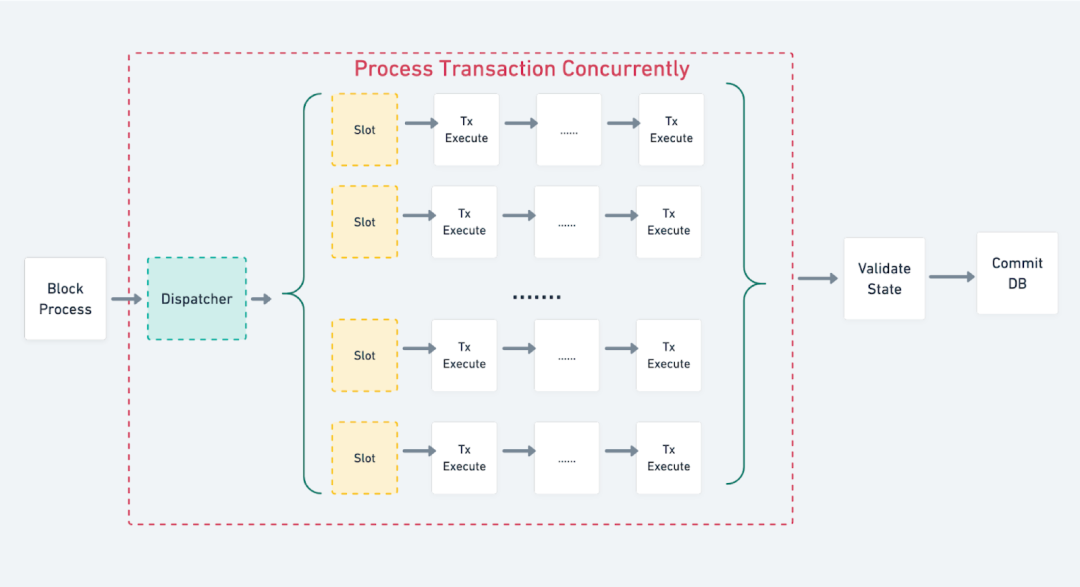
- Data sharding: The entire blockchain state is divided into multiple shards, each containing a portion of the global state information.
- Shard nodes: Multiple nodes run on each shard, with each node responsible for maintaining and processing transactions and state within that shard.
- Cross-shard communication: Through cross-shard communication protocols, data consistency between different shards and the global order of transactions are ensured. Cross-shard communication can be achieved using cross-shard message passing and cross-shard locking mechanisms.
- Parallel processing: Nodes within each shard can independently process transactions within that shard, and multiple shards can also run in parallel, achieving the parallel processing capability of the entire system.
3. Leading Projects
3.1 Monad: L1 with Built-in Parallel EVM
Monad is a Layer 1 blockchain project based on EVM, aiming to significantly improve the scalability and transaction speed of the blockchain through its unique technical features. Monad processes as many as 10,000 transactions per second and has a one-second block time and instant finality. This high-performance is attributed to the unique Monadbft consensus mechanism and compatibility with the Ethereum Virtual Machine (EVM).
Application of Parallel EVM in Monad:
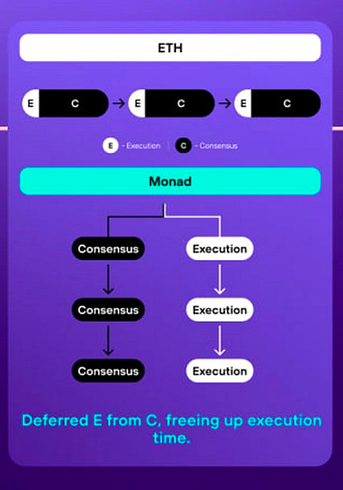
1. Implementation of Parallel Execution
- Optimistic execution approach: Executing subsequent transactions before earlier transactions in the block are completed, which sometimes leads to incorrect results. To address this issue, Monad tracks the inputs used in transaction execution and compares them with the outputs of previous transactions. If differences are found, it indicates that the transaction needs to be re-executed.
- Static code analysis: Monad uses a static code analyzer to predict dependencies between transactions during execution, avoiding invalid parallel execution. In the best case, Monad can predict many dependencies in advance; in the worst case, Monad falls back to a simple execution mode.
2. Monadbft Consensus Mechanism
- Efficient communication: It uses paired BLS signatures to address scalability issues, allowing signatures to gradually aggregate into one signature, proving the shared signed messages related to public keys.
- Hybrid signature scheme: BLS signatures are only used for aggregatable message types (such as voting and timeouts), while the integrity and authenticity of messages are still provided by ECDSA signatures.
3. Delayed Execution
- Greater fault tolerance: This method is more tolerant to changes in specific computation times, as execution only needs to keep up with the speed of consensus.
- Merkle root delay: To ensure state machine replication, Monad includes a Merkle root in block proposals that is delayed by d blocks. This ensures the consistency of the entire network, even in the presence of node execution errors or malicious behavior.
Currently, Monad's parallel EVM supports processing 10,000 transactions per second, with a block time of only 1 second, enhancing network security and efficiency using the PoS mechanism, and is expected to launch its mainnet in the third quarter of 2024.
The official account has also accumulated 283,000 followers on Twitter, leading an enthusiastic and active community. Particularly, the Ethereum community seems very excited about the upcoming launch of Monad, putting Monad in a favorable position to capitalize on early hype and adoption.
In terms of project background, Monad Labs has completed two rounds of financing, in February 2023 and in April of this year. The $225 million financing completed on April 9th this year was led by Paradigm, with other investors including Electric Capital. The $19 million seed round financing completed in 2023 was led by Dragonfly Capital, with participation from Placeholder Capital, Lemniscap, Shima Capital, Finality Capital, angel investors Naval Ravikant, Cobie, and Hasu.
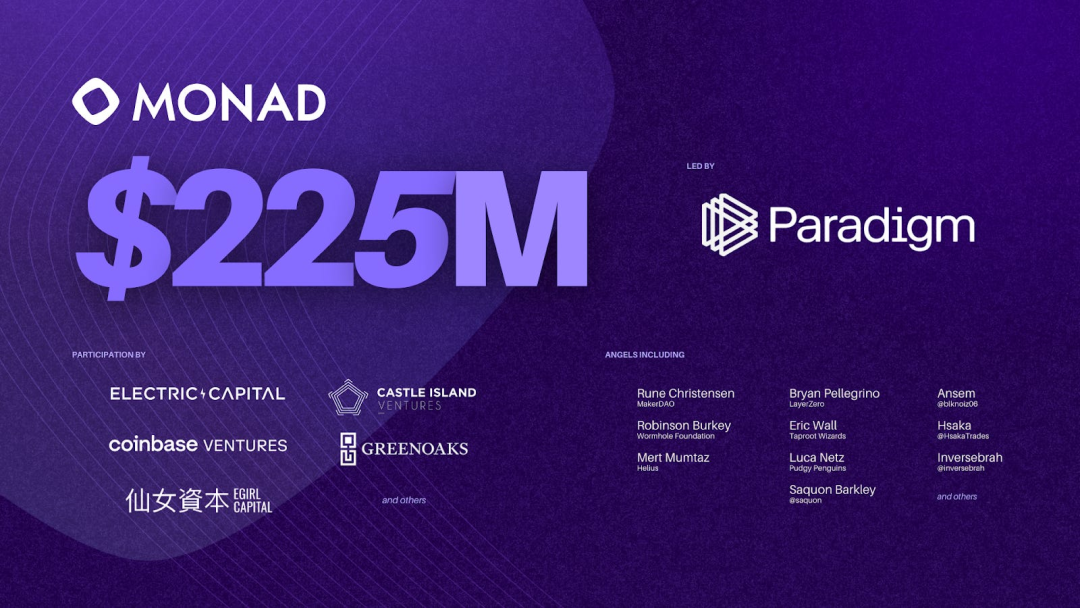
Monad has a strong team background, with members from top projects in the blockchain field, and has a powerful technical team and financial support. Monad's co-founder and CEO Keone Hon previously led a high-frequency trading department at Jump Trading and graduated from the Massachusetts Institute of Technology. Another co-founder, James Hunsaker, is also a senior software engineer at Jump Trading and graduated from the University of Iowa. In addition, Eunice Giarta, co-founder and COO of Monad, has extensive experience in traditional financial technology and previously worked at Shutterstock in the payment and infrastructure licensing division, leading a development team at Broadway Technology to build enterprise trading systems.
3.2 SEI Network: L1 with Built-in Parallel EVM, V2 Version Puts Parallel EVM on the Agenda
SEI Network is a Layer 1 blockchain focused on decentralized finance (DeFi) infrastructure, primarily focusing on order book development.
By adopting the mechanism of parallel EVM, SEI Network conducts parallel order matching, achieving the goals of high speed, low fees, and dedicated functionality to support various trading applications. SEI has an average block time of 0.46 seconds and supports over 80 applications.
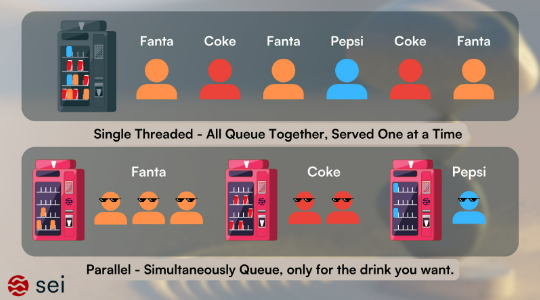
Application of Parallel EVM in SEI Network:
- Smart block propagation and optimistic block processing: Accelerates transaction processing time and reduces latency and increases throughput by providing all relevant transaction hash values.
- On-chain order matching engine: Unlike the commonly used automated market maker (AMM) systems, SEI uses an on-chain order book to match buy and sell orders at specific prices. All decentralized applications (dApps) based on Cosmos can access SEI's order book and liquidity.
- Frequent batch auctions (FBA): Batches transactions to execute orders simultaneously within each block to prevent front-running and MEV.
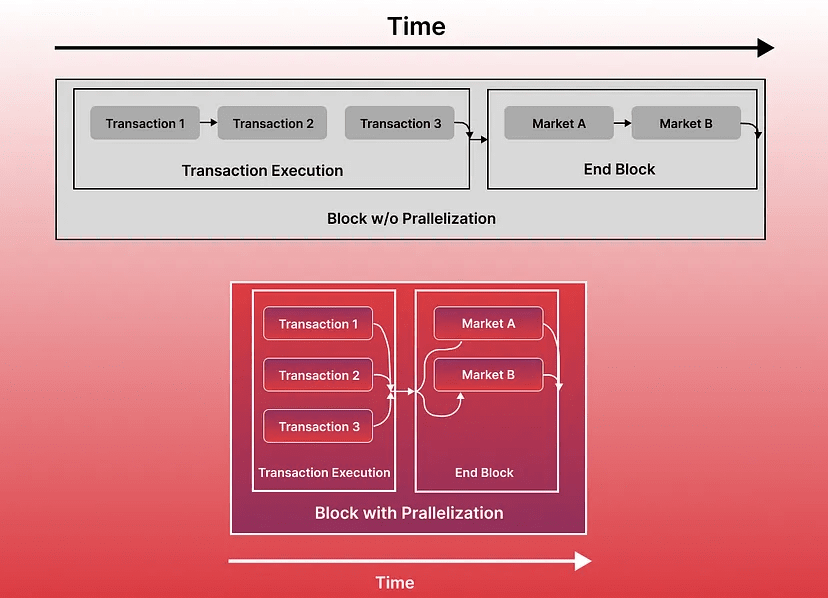
SEI Network has issued its native token SEI. Within the SEI Network ecosystem, the SEI token serves various purposes, including:
- Transaction fees: Used to pay transaction fees generated on the SEI Network, which serve as incentives for validators and contribute to network security.
- Staking: Users can stake SEI tokens to earn rewards and enhance the overall security of the SEI Network.
- Governance: SEI token holders have the ability to actively participate in the governance of the SEI Network, including voting on proposals and electing validators.
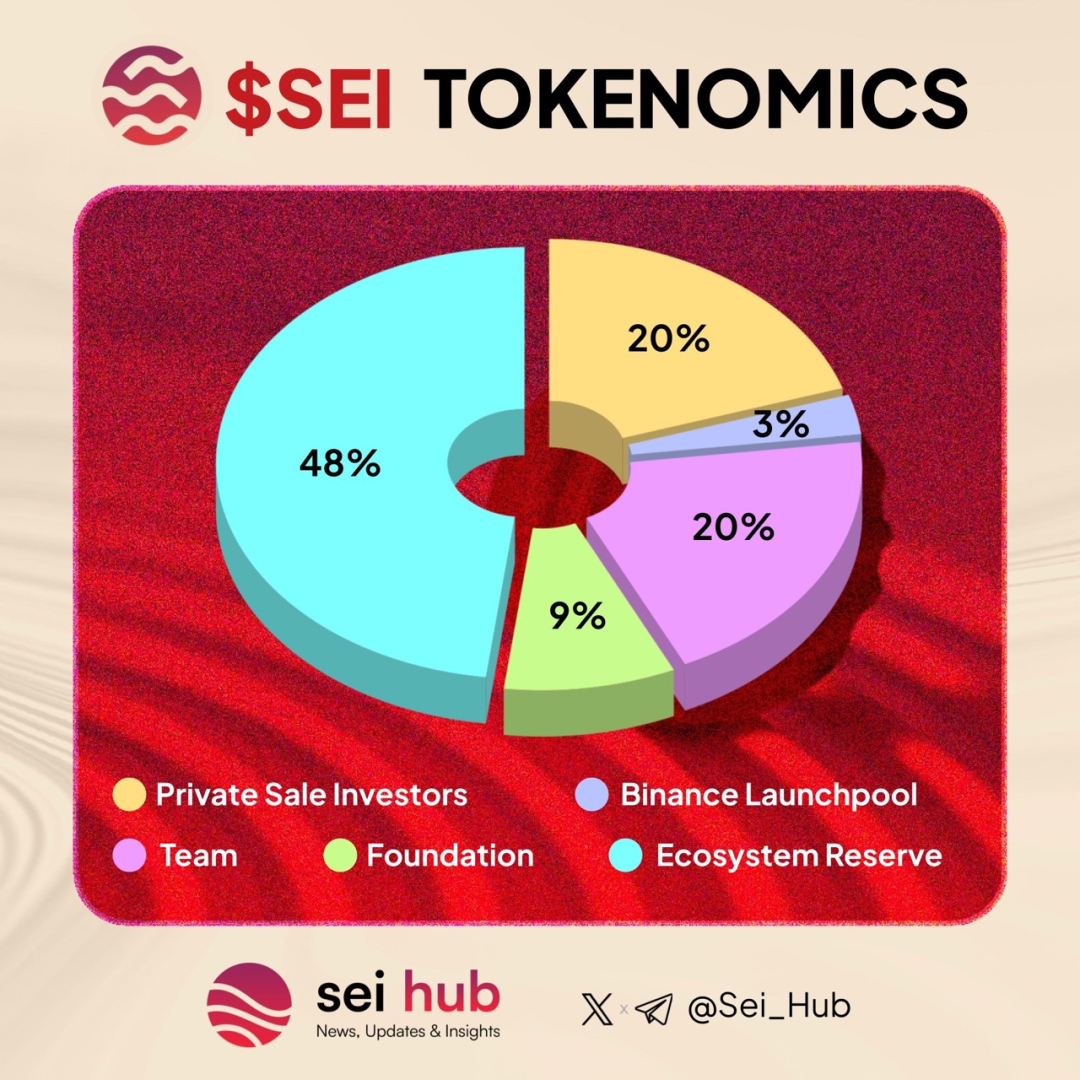
The total token supply of SEI is 10 billion, with 51% allocated to the SEI community. Of this, 48% is allocated as ecosystem reserves, rewards for stakers and contributors, validators, and developers. An additional 3% (3 billion SEI) is designated for the first season airdrop, with the remaining portion allocated to private investors, the foundation, and the SEI team.
As of May 30th, the price of the SEI token is $0.5049, with a market capitalization of $1,476,952,630, ranking 63rd on the cryptocurrency leaderboard. The 24-hour trading volume is $78,970,605, indicating high market participation.
SEI Network currently has a TVL of 18 million, has raised a total of approximately $55 million in financing, and has an FDV of $8.2 billion. The official Twitter account has 666,000 followers.
SEI Network's co-founder Jeff Feng graduated from the University of California, Berkeley. Before entering venture capital at Coatue Management, he worked as a technology investment banker at Goldman Sachs for three years. Another co-founder, Jayendra, graduated from the University of California, Los Angeles, and was a software engineering intern at Facebook.
3.3 Eclipse: Compromise Faction, Introducing SVM into the Ethereum Ecosystem on L2
Eclipse is a next-generation optimistic Layer 2 solution based on Ethereum, powered by the Solana Virtual Machine (SVM). By introducing SVM into Ethereum, it combines Ethereum's settlement, Solana's Virtual Machine (SVM) execution, Celestia's data availability, and RISC Zero's zero-knowledge proofs, providing a massively parallel execution environment, allowing multiple operations to proceed simultaneously, thereby increasing network throughput and efficiency, while reducing congestion and transaction fees. Through this structure, Eclipse aims to improve the scalability and user experience of dApps.
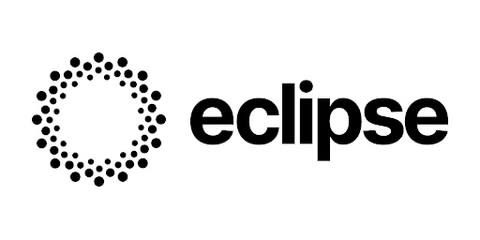
Key Features of Eclipse
1. High Transaction Throughput:
Eclipse achieves extremely high transaction processing capacity by utilizing SVM and parallel execution technology, supporting thousands of transactions to be processed simultaneously.
2. Instant Finality:
Through a pipelined consensus mechanism, it achieves instant completion and finality of transactions within each block.
3. Ethereum Compatibility:
Eclipse is fully compatible with the Ethereum Virtual Machine (EVM), allowing developers to easily port existing Ethereum applications to Eclipse.
4. Data Availability:
Utilizes Celestia's data availability solution to ensure data security and verifiability while maintaining high throughput.
5. Zero-Knowledge Proofs:
Adopts RISC Zero technology to implement zero-knowledge fraud proofs, enhancing system efficiency and security.
Application of Parallel EVM in Eclipse
Eclipse achieves parallel EVM by integrating the Solana Virtual Machine (SVM), significantly improving transaction processing speed and efficiency.

1. Parallel Execution:
Technical Principle: Eclipse uses the Sealevel runtime of SVM, allowing non-overlapping state transactions to be executed in parallel, rather than sequentially.
Implementation: By explicitly describing all the states that each transaction reads or writes during execution, SVM can process non-overlapping state transactions in parallel, significantly increasing throughput.
2. Ethereum Compatibility:
Neon EVM Integration: To achieve EVM compatibility, Eclipse integrates Neon EVM. This allows the Eclipse mainnet to support Ethereum bytecode and Ethereum JSON-RPC.
Local Fee Market: Each Neon EVM instance has its own local fee market, allowing applications to deploy their contracts to reap all the benefits of the application chain without compromising user experience, security, or liquidity.
3. Modular Rollup Design:
Infrastructure Layer: Eclipse aims to be the infrastructure layer of the Layer 3 ecosystem, achieving high performance and scalability by supporting dApp-specific Layer 3 Rollup.
In simple terms, Eclipse's design logic is that transaction execution occurs in Solana's SVM, while transaction settlement remains on Ethereum.
In terms of project background, Eclipse completed a $15 million financing in September 2022, with investors including Polychain, Polygon Ventures, Tribe Capital, Infinity Ventures Crypto, and CoinList. Additionally, on March 11th this year, it also completed a $50 million Series A financing, co-led by Placeholder and Hack VC, bringing its total financing to $65 million.
Eclipse's co-founder & CEO Neel Somani has previous experience at companies such as Airbnb, Two Sigma, and Oasis Labs, while Chief Business Officer Vijay was formerly the Head of Business Development at Uniswap and dYdX teams.
4. Challenges
1. Data Race and Read-Write Conflicts:
In a parallel processing environment, simultaneous reading and modification of the same data by different threads can lead to data races and read-write conflicts. This situation requires complex technical solutions to ensure data consistency and conflict-free execution of operations.
2. Technical Compatibility:
New parallel processing methods need to be compatible with existing Ethereum Virtual Machine (EVM) standards and smart contract code. This compatibility requires developers to learn and use new tools and methods to fully leverage the advantages of parallel EVM.
3. Ecosystem Adaptability:
Users and developers need to adapt to the new interaction patterns and performance characteristics brought about by parallel processing, requiring sufficient understanding and adaptability to new technology from all ecosystem participants.
4. Increased System Complexity:
Parallel EVM requires efficient network communication to support data synchronization, increasing the complexity of system design. Intelligent management and allocation of computing resources are also important challenges to ensure efficient resource utilization during parallel processing.
5. Security:
Security vulnerabilities in a parallel execution environment may be amplified, as a single security issue could affect multiple simultaneously executed transactions. Therefore, stricter security audits and testing processes are needed to ensure the security of the system.
5. Future Outlook
1. Enhancing Blockchain Scalability and Efficiency:
Parallel EVM significantly improves blockchain throughput and processing speed by executing transactions simultaneously on multiple processors, breaking the limitations of traditional sequential processing. This will greatly enhance the scalability and efficiency of blockchain networks.
2. Driving the Popularization and Development of Blockchain Technology:
Despite facing technical challenges, the potential of parallel EVM is enormous, capable of significantly enhancing blockchain performance and user experience. Successful implementation and widespread adoption will drive the popularization and development of blockchain technology.
3. Technological Innovation and Optimization:
The development of parallel EVM will be accompanied by continuous technological innovation and optimization, including more efficient parallel processing algorithms, smarter resource management, and a more secure execution environment. These innovations will further enhance the performance and reliability of parallel EVM.
4. Supporting More Diverse and Complex Applications:
Parallel EVM can support more complex and diverse decentralized applications (dApps), especially in scenarios requiring high-frequency trading and low latency, such as decentralized finance (DeFi), gaming, and supply chain management.
References:
https://www.coinlive.com/news/comprehensive-interpretation-of-parallel-evm-project-overview-and-future-prospects
https://medium.com/@alibertaysolak/what-is-parallel-evm-70451db5f327
免责声明:本文章仅代表作者个人观点,不代表本平台的立场和观点。本文章仅供信息分享,不构成对任何人的任何投资建议。用户与作者之间的任何争议,与本平台无关。如网页中刊载的文章或图片涉及侵权,请提供相关的权利证明和身份证明发送邮件到support@aicoin.com,本平台相关工作人员将会进行核查。




